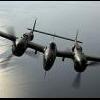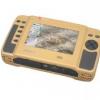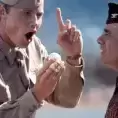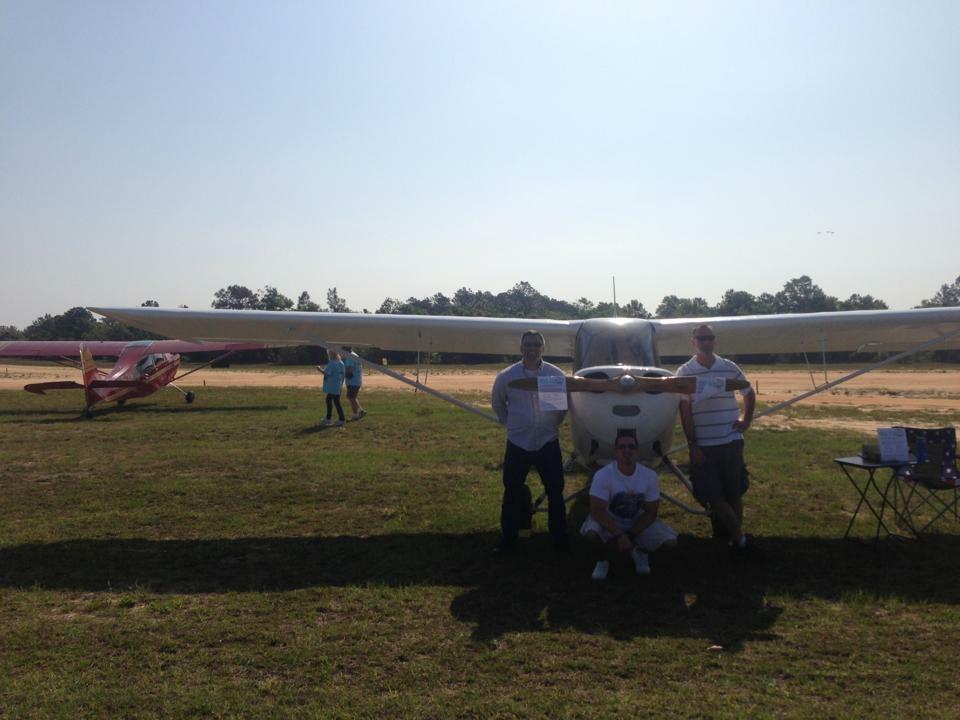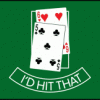Leaderboard
Popular Content
Showing content with the highest reputation on 09/04/2019 in all areas
-
2 points
-
I’ll chime in with my worthless opinion. The Air Force wants a way to cut the cost and time required to train new pilots, and I think that is the biggest downfall of PTN. There is huge potential for these devices to be awesome training tools, not just for UPT but for IQT/MQT, upgrades, CT and all the other training programs out there. I honestly think VR would make the most difference in advance training, after pilots have a foundation of airmanship, studying, chair flying etc. I’m currently in a IQT program for my 2nd MWS, I have amazed myself at how much more efficiently I can study and chair fly than back in the day going though UPT and my first IQT/MQT program, I attribute it to having a good foundation of airmanship, study habits, and just knowing what is important to study. Having a VR device I could run though profiles with on my own time would probably take me to that next level in the jet. Problem is it’s going to require a massive investment of $$ and time to make the VR of a high enough quality to provide great instruction. Money and time are exactly what the AF is trying to cut, and I don’t think the AF is smart enough to realize a major investment on the front end will pay dividends on the back end. I’m curious if we left the old UPT amount of flight hours and 12 month syllabus timeframe alone and incorporated a high quality VR program how much better quality of stud you would get on the back end, subsequently reducing 87/88/89 rides, failed IQT rides, mishaps etc.2 points
-
Teachability (willingness to learn), and dedication to study and preparation. Like someone else said, you can teach a monkey to fly with enough bananas. The smart ones know that they get a finite number of bananas in the jet and that further bananas have to be earned in chair flying (and other forms of preparation).1 point
-
I'll agree that we can't be afraid to try new things to improve training but I think the criticism VR is getting is because that improvement is being focused on reducing manufacturing inefficiencies rather than on improving the final product. At least that's the perspective I've been seeing.1 point
-
Dude, there are absolute great-dude meatheads who weren’t very serious about their studies in skool who are Fighter WIC instructors. Some things click with some people that you wouldn’t expect.1 point
-
Lol “bad leadership”. Are you still in college? LTs are barely capable of leading the coffee pot and corn machines without getting lost on their way to work, regardless of where they went to school. We’re all morons for the first few years. Pretending like they know about leadership as an LT, or are a better candidate for UPT, because they went to the academy just makes people think you’re a tool. College performance =/= flying performance. Quality is decreasing because the # of flight hours has decreased. Nothing replaces experience. You can teach a monkey to fly with enough time.1 point
-
I hope the blend of UPT and PTN goes well. Speaking from the perspective of hearing from a bro firsthand how PTN in version 1 went down, to seeing VR force fed into UPT flight rooms, to hearing from another bro instructing at PTN version 2, there’s definitely a lot of merit (IMO) in how they’re adapting technology to assist with instructing. I see a HUGE problem in how it’s been implemented though. VR goggles and flight sims are in nearly every flight room at laughlin now and but few IP’s have more than a passing familiarity with how to use them. The students catch on how to boot them up quickly but since there’s just videos of guys doing 69 patterns and aerobatics, with no integrated narrator or instructor on the vid, the sims are glorified chair flying or time-wasting machines. That’s not a bad thing necessarily but there’s a lot of untapped potential in these things. Sidebar: i was a FAIP that went through IFF somewhat recently and they’ve got these same cheap VR sims too. A critical difference at IFF though, was that the videos on these sims weren’t just raw videos but were edited to show a birds eye view of the engagement being flown in ACMI and a small window that had a perspective dedicated to looking at the bandit, on top of the view of go pro footage of the fight. That was HUGE for being able to see the pacing of the fights, to anticipate how fast a cross check had to be, the comm to set up and term an engagement, and most critically where to expect to regain sight of the BDT in DBFM. Anecdotally, the bros who sat in these did better than those who did not. Now if there had been higher a fidelity view of the BDT at range and a dedicated IP to talk you through it (or at least a consistently high quality narrator option), then I think that these sims would have been way more effective than the WST sims they had us do for OB/DB. Maybe in the future it’s a part of academics to sit in the VR sims and study the flow from similar videos, followed by more where you monkey through the left hand/right hand stuff on your own in prepar3d or some program, before a ‘capstone’ sim with a CSI, so that the majority of the learning doesn’t require an IP. Who knows what will be it would be interesting to see the effectiveness of making a lot of that stuff easier to learn. Long story short- I think there’s tremendous potential with the sims, but the knowledge of what to use them for and how to make a good product for them is lacking. The VR sims need a significant amount of effort to mold them into effective training aids which takes time and (most important) technical knowledge. We’ve thrown the sims at people and yelled at them to innovate, and we wonder why people are exasperated and unimpressed by the haphazard results.1 point
-
Seizures and vision loss are conducive to flying... sucks, but it is what it is, and the mission is more important than me wanting to fly it impaired.1 point
-
1 point
-
I was bottom of my ROTC class, had a gentleman's 2.7 GPA, and (still) questionable leadership...but I did somehow manage to fly a bunch of members of congress around the world and pass my OME last week. 🤷♂️1 point
-
It’s not as bad as you make it. It’s a average of 6 days a month and that includes travel. At CBM, it’s 18 per quarter. Do it all at once or break it up as you see fit. You gotta do a minimum of a 4 string block though to use 6 day rules (Day 1: travel to/get green/make sure ready to fly next day — Day 6: fly 1/do paperwork/ travel home). Anything less is IDT travel and expected to fly on day 1. as for deployments, they are real but it’s sorta like a dartboard. Each band 1 usually drops to group. Then, whatever base is up it’s theirs (unless another base volunteers to take it, but then that base on hook for next). Once that base has had one, next base up in rotation for next drop. So, realistically, a deployment has to drop in your band, to your base without another base Volunteering for it first. And then your racked and stacked inside if your band too. It’s not the monster it’s made out to be, unless you happen to be the guy who ends up as the bullseye but odds are WAY in your favor that you’ll never see it.1 point
-
Why not join the guard and do all that plus get promoted? While on active duty, I saw too many passed over bros (or even just dudes not on command track) get tagged with undesirable assignments and/or remotes.1 point
-
As someone who went through something like this and was entertaining a tort lawsuit against said accusers the legal advice I got was unless I had a proverbial smoking gun like a text saying they lied, I most likely wouldn’t win.1 point
-
Let the record show W. SHANE COHEN, Colonel, USAF539 Military Judge ...is a badass.1 point
-
Been a few months, but maybe my experience can help. LOR are very beneficial, especially when coming down to the wire on a interview or hire basis. Having someone of significance in an industry or who can attest to your piloting and/or professionalism is great. Thankfully I was and am fortunate enough to have met some very helpful people within the community (prior/current military aviation). If you can get a hold of someone who flew (or currently flies) in the AF and build a great relationship with them, then ask for a LOR. Being an older candidate doesn't make it more difficult, in fact, I think it's been beneficial to network and build relationships with people who may lead me in their flight formation someday. Key take-away: Don't let the age thing be a looming factor, especially with letters of recommendations, just get yourself out there. @SLeon_17 Agree with what @N730 stated, unless it was asked otherwise, I kept a generic "Dear Sir/Ma'am," so I didn't have to request a signed copy from my recommenders every time I applied to a new squadron.1 point
-
I’ve been devastated ever since I heard the news early Sunday. What a tragic loss. Hook was such an inspiring person. I got the pleasure of flying with him a few times years ago at the Eglin Aero club. Here is a pic of when he asked me to join him to fly his Champ to a local Fly-in. Nickel on the grass.1 point
-
My dad flew tankers, fighters, and helos. It can be done and has been done by quite a few people. Some dudes in tankers now would make great fighter pilots. Some pilots flying fighters now should be on tankers. Your assignment out of UPT is exactly that; an assignment. It’s not your destiny.1 point
-
1 point
-
-1 points
-
I'm not saying just how somebody is as a college student will be the only thing that determines how good of a pilot they are, not sure where you're picking that up. I'm talking about combinations of all three. The TYPES of people which include lack of drive, effort, and aptitude. Are those not all important traits? Enlighten me.-2 points


